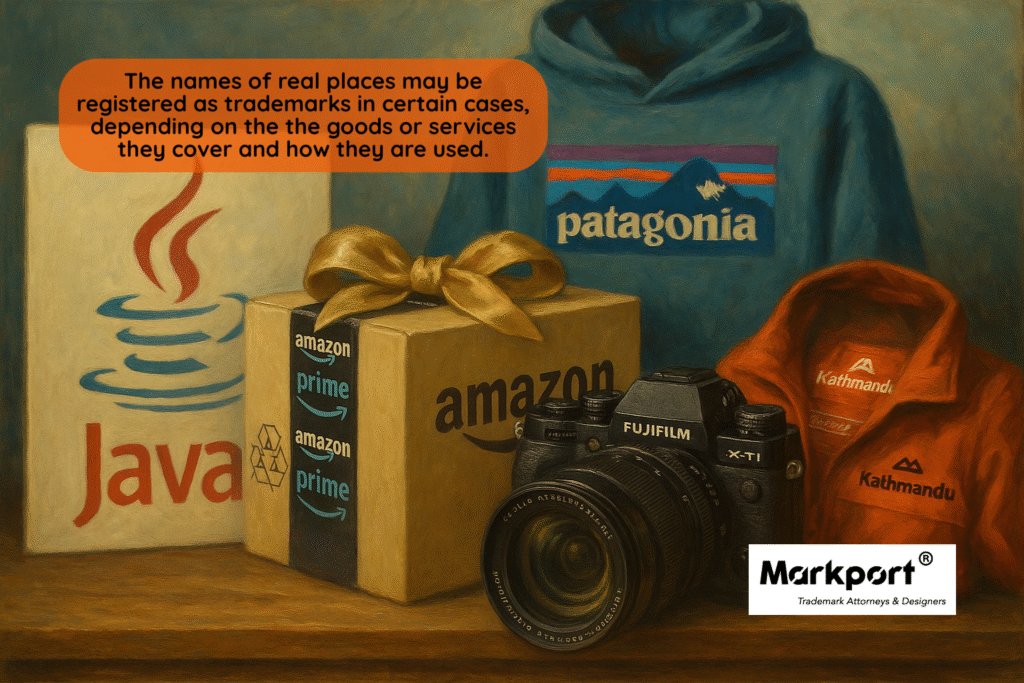Where You Are: Real Places as Trademarks in Australia

Place names like Amazon, Java, Kathmandu, Columbia, or Patagonia are strong and memorable, but their use as trade marks is legally delicate. Registering a place name gives exclusive rights across Australia, but only if it can uniquely distinguish your goods or services. Your brand stands to gain real protection, but only when your trade mark doesn’t mislead consumers or monopolise common geographic terms.
How Australian law treats place names
Under the Trade Marks Act 1995 (Cth), a trade mark must be a “sign … used … to distinguish goods or services … provided by any other person” (s 17). Section 41 makes clear that geographical names are not inherently adapted to distinguish and may face refusal unless they acquire distinctiveness through use or originality.
IP Australia examines whether the place name is likely to indicate geographic origin. If consumers would reasonably think the product or service comes from that location, the application may be refused.
When registration is likely not allowed:
- The place name has a strong reputation for the goods or services
E.g. “Sydney Tours” clearly describes travel services in Sydney. It’s too descriptive to distinguish one business from another. - It’s a commonly used regional name in the trade
E.g. “Barossa Wine” refers to a well-known wine region. One producer can’t monopolise a term many need to use truthfully. - Consumers would assume the goods come from that place
If the name implies geographic origin, it must be free for all traders in that location to use.
When registration may be allowed:
- The place name is obscure, foreign, or arbitrary
If the name has no obvious connection to the goods or services, it’s seen as a brand, not a description (e.g. “Java” for software). - The brand includes unique or invented elements
Combining a place name with other distinctive words or logos can make it registrable (e.g. “Bondi Sands”). - The name has acquired distinctiveness
Long-term, exclusive use in the market can make a place name uniquely associated with one business (e.g. “Victoria University” or “Singapore Airlines”).
Why Brands Use Place Names and Their Legal Implications
Using a place name can strengthen your brand, but it must be handled strategically to avoid legal issues.
Evocative use
Some brands use geographic names arbitrarily, not to describe origin but to evoke imagery, adventure, or quality.
- Examples: Amazon, Kathmandu, Columbia
These names are not descriptive of the goods or services and are easily registrable because they function as unique brand names, not location indicators.
Descriptive or origin-based use
Other brands use place names to suggest actual origin, which can trigger stricter scrutiny.
- Examples: airlines, local cafés, regional hotels
These often need proof of acquired distinctiveness, such as long-standing use or strong brand awareness. Without it, trade mark offices may refuse registration, especially if the name is widely used or could mislead consumers.- Example: attempts to register “Yosemite” faced opposition due to cultural and public interest issues.
Strategic caution under Australian law
IP Australia assesses these marks under section 41 of the *Trade Marks Act 1995 (Cth):
- Purely geographic terms are likely to be refused unless the mark has a distinctive twist or has developed secondary meaning.
- Adding unique or invented elements can increase your chances of registration.
- Examples: Mount Franklin logo, Fiji Water logo
Legal Considerations in Australia
- Descriptive place names are generally not registrable on their own if they refer to the origin of the goods or services
Example: “Tasmanian Apples” would likely be refused, as it describes where the apples come from. - A brand must show acquired distinctiveness if the place name is commonly used in the trade
Example: “Barossa Wine” may face difficulty unless supported by strong evidence of long-standing use and brand recognition. - Adding unique or arbitrary elements can improve registrability
Example: “Bondi Sands” successfully registered because it combines a well-known place with a distinctive, non-descriptive term. - Some place names, especially wine regions, are protected under the Geographical Indications Register
Examples: Barossa, Margaret River, and Coonawarra are restricted terms. You can only use them for wine if the product originates from those locations.
Famous examples
- Amazon – a river, but here used as a powerful and abstract brand name for an online retailer.
- Java – an island and a coffee origin, but used in tech as a programming language and as a company name.
- Kathmandu – the capital of Nepal, used for a travel and outdoor gear brand, well known in Australia and New Zealand.
- Columbia – both a place and a well-established outdoor clothing brand, now strongly distinctive in its own right.
- Montblanc – named after a European mountain, it evokes luxury and craftsmanship in pens and watches.
- Fuji – a Japanese mountain, but used by Fujifilm to brand imaging products globally.
- Patagonia – a South American region, used to brand ethical outdoor gear with a globally recognised identity.
What Markport® offers
Our trade mark and brand design team can help assess if your place-based brand name is likely to be accepted. We support you in:
- Reviewing the distinctiveness of your proposed name
- Advising if you need to provide evidence of use or acquired distinctiveness
- Adding creative elements to boost registrability
- Responding to IP Australia objections
- Protecting your brand long-term across multiple classes
If you’re unsure whether your brand name is too geographic or too generic, speak with us before you apply.
Let’s find your place and find your brand.
